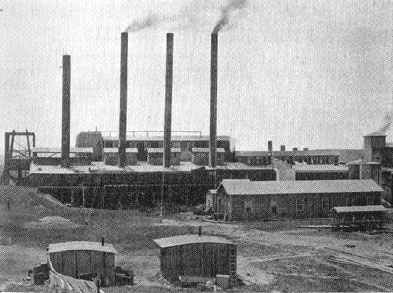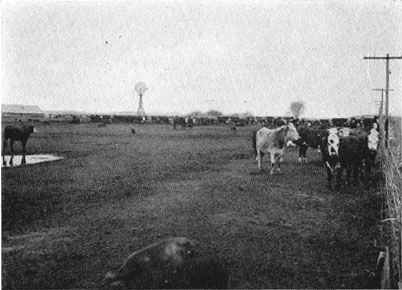|
|
N e b r a s k a
F a c t s
|
37
|
Omaha is an
important manufacturing and jobbing center. Its factory
output is $275,000,000 annually, and among its industries
is the largest macaroni factory in the country. Omaha's
wholesalers distribute $200,000,000 worth of goods
annually. Its trade territory includes Nebraska, Iowa,
Missouri Kansas, Montana, Colorado, Wyoming and the
Dakotas. The important products manufactured in Omaha are
packing house products, smelter products, creamery
butter, and alfalfa products. Among the important
commodities distributed from Omaha are automobiles,
groceries, lumber, agricultural implements, oils and dry
goods.
Omaha was the first of the
larger cities to adopt the commission form of government
and its municipal methods are attracting attention
throughout the land. It has a remarkable municipally
owned water system, a municipal ice plant is being
installed, and a municipal coal yards is in
operation.
That Omaha is building for
the future is shown by the character and pretentions of
its public buildings. The larger buildings are: The
Woodmen of the World, eighteen stories, which is also the
home of the Bureau of Publicity; The First National and
the City National, each sixteen stories; Union Pacific
Headquarters and the Hotel Fontanelle, each fourteen
stories; The Omaha National Bank, Omaha Bee, Omaha
World-Herald, Federal, Douglas County Court House, Omaha
High School, City Hall, Omaha Grain Exchange, Public
Library and Auditorium. Omaha has 142 churches,
fifty-three school buildings, thirteen hospitals
(including the largest west of the Mississippi) and is
the location of the Creche, Child Saving Institute,
Emanuel Orphans Home, and the Nebraska Institute for the
Deaf. There are nineteen parks, containing 1,300 acres of
land, and thirty-five miles of boulevards in Omaha. In
Riverview Park the city zoo is located and is well worth
a visit.
Omaha is a great railway
center with 149 passenger trains moving in and out daily.
Thousands of freight cars bring the products of the
plains to Omaha and go back filled with millions of
dollars worth of Oamha-made or Omaha-jobbed products.
Twenty-two railroad lines, operated by nine trunk
systems, converge in Omaha. Omaha has grown so rapidly
that it has absorbed its suburbs and is almost a city
without them, the home of 214,000 people.
Omaha is a university town.
It is the home of Creigbton University, Brownell Hall,
the University of Nebraska College of Medicine, and the
University of Omaha. Bellevue College, south of the city,
is a well-known institution.
Omaha's general prosperity
is reflected in the amount of mail which passes through
its postoffice. Over 100,000,000 pieces of first class
mail were handled last year. This year's receipts will be
in the neighborhood of $2,000,000. The visitor to Omaha
will find plenty of hotels. The accommodations are the
best west of Chicago. There is always a new hotel going
up in Omaha. Omaha is a city of organization. The
Commercial Club has over 2,000 members, the Knights of
Ak-Sar-Ben over 3,000, The Y. M. C. A. over 2,000, the Y.
W. C. A. over 3,000. AkSar-Ben is a unique organization.
Each Monday night during the summer season, at its Den,
it puts on a secret serio-comic entertainment to which
any member may take his out-of-town guests. In the fall
Ak-Sar-Ben puts on a festival with street parades which
|
![]()
![]()
![]()




